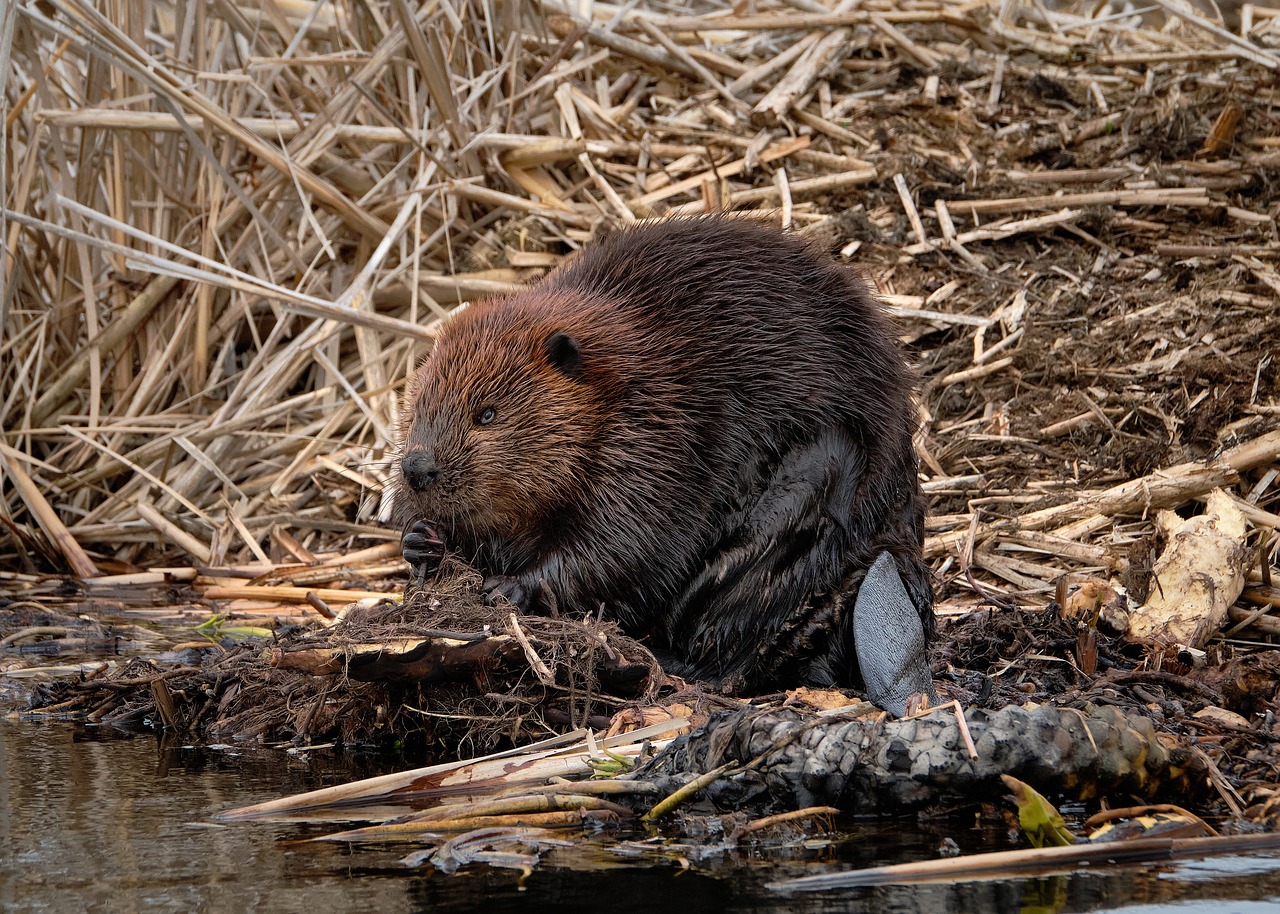Beavers: Nature’s Architects Shaping Biodiversity
Beavers, often considered nature’s engineers, play a pivotal role in shaping ecosystems and supporting biodiversity. These industrious rodents possess remarkable abilities to alter landscapes, creating diverse habitats that benefit numerous plant and animal species. In this article, we will delve into the fascinating world of beavers, exploring their ecosystem engineering prowess and their invaluable contributions to biodiversity conservation.
- The Remarkable Beaver
Beavers, known for their iconic dams and lodges, are the largest rodents in North America and Eurasia. Equipped with sharp incisors and strong jaws, they are well-adapted to gnawing through trees and building intricate structures. Beavers are primarily nocturnal and semi-aquatic creatures that inhabit streams, rivers, and wetlands. Their extraordinary ability to transform landscapes sets them apart as ecosystem engineers, influencing water flow, enhancing water storage, and fostering the growth of various plant and animal species. - Beaver-Made Habitats
One of the most notable contributions of beavers to biodiversity lies in their creation of complex aquatic habitats. By constructing dams across rivers and streams, they create ponds that serve as havens for an array of organisms. These ponds provide water sources for a diverse range of species, including amphibians, waterfowl, and fish. Furthermore, the flooded areas surrounding the dams encourage the growth of aquatic vegetation, offering food and shelter for numerous aquatic insects, invertebrates, and mammals. - Wetland Restoration
Beavers’ habitat modification activities are closely linked to wetland restoration. Their dams not only create ponds but also raise the water table, facilitating the regeneration of wetland vegetation. Wetlands are vital ecosystems that support high biodiversity, acting as nurseries for fish, breeding grounds for birds, and essential habitats for numerous other wildlife species. Beavers contribute significantly to the creation and maintenance of wetlands, which are rapidly disappearing due to human activities. - Biodiversity Hotspots
Beaver-made habitats function as biodiversity hotspots due to the increased diversity of flora and fauna they support. The presence of beavers leads to the creation of mosaic landscapes, combining open water, wetlands, and forests. This diverse range of habitats attracts a wide array of species, including both aquatic and terrestrial organisms. Birds, mammals, reptiles, and insects all benefit from the rich resources provided by beaver-engineered landscapes, fostering biodiversity and promoting ecological resilience. - Altered Hydrology
The alterations in water flow caused by beaver activity have far-reaching effects on the surrounding ecosystems. By building dams, beavers slow down the flow of water, leading to sediment deposition and the creation of fertile soils. These changes promote the growth of diverse riparian vegetation, such as willows and alders, which provide food and shelter for numerous species. Beaver ponds also act as natural filters, removing pollutants and improving water quality downstream. - Ecosystem Services
Beavers offer invaluable ecosystem services that extend beyond biodiversity conservation. Their activities contribute to flood mitigation by storing and slowly releasing water, reducing the risk of downstream flooding. Additionally, the wetland habitats created by beavers act as carbon sinks, sequestering carbon dioxide from the atmosphere and mitigating climate change. These ecosystem services underline the importance of beavers in maintaining the health and functionality of ecosystems.
Beavers, through their remarkable landscape-altering abilities, play a crucial role in supporting biodiversity and ecosystem functioning. Their dams, lodges, and wetlands create a rich tapestry of habitats, attracting a wide
